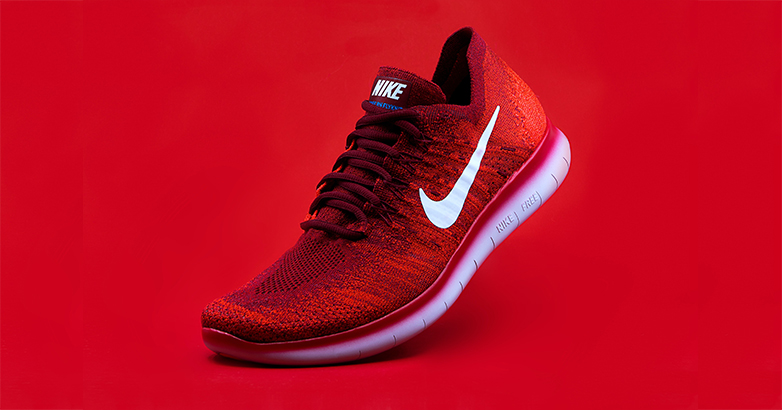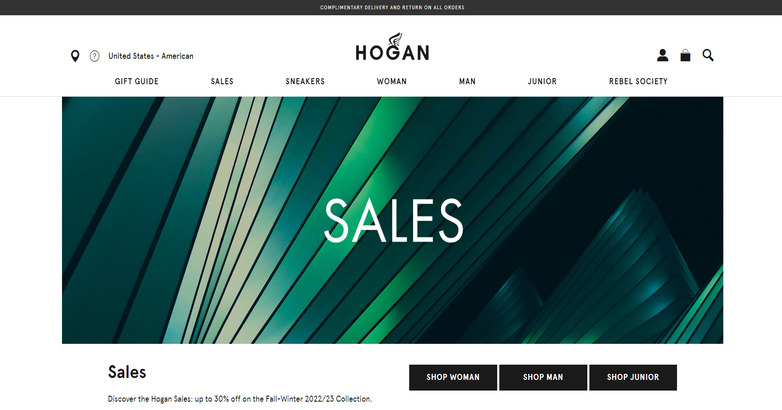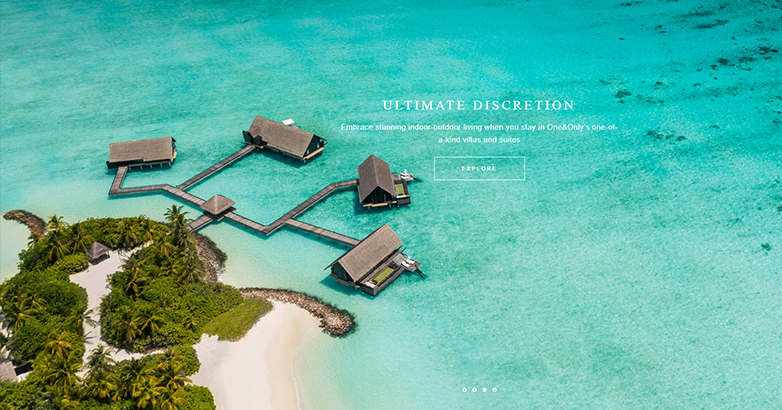Brand marketing is the number one tool for creating long-term positive connections with the public and your target audience. In many ways, branding is just as important as the product or service that you sell.
Great brand marketing is a crucial step for any successful business, as it has the ability to set you apart, create value proposition, and drive sales by hitting all of the important touchpoints, including your brand story, what makes you different from other brands, and how your brand makes people feel.
In this guide, we are going to learn all about what a brand is, what brand marketing is, and the crucial elements that go into developing a successful branding strategy.

What Is a Brand?
Before we dive in and start looking at strategies, let’s first answer the question, what is a brand?
Ask anyone you know, and they’ll likely have different ideas as to what the term “brand” means to them. So, to get a better idea of its definition, let’s start by looking at what a brand isn’t.
A brand is not a product.
While the brand will certainly help sell a product, a product on its own does not create a brand. The same thing goes for a company’s values, culture, and promises. They can work as elements of a brand, though they don’t comprise brands all on their own.
A brand is also not a logo.
Logos are symbols that provide visual representations of brands for consumers, similar to trademarks, names, slogans, typefaces, and color palettes.
At its essence, a brand is something intangible.
It is the thoughts, feelings, and emotions people get when they hear about your company or see your products. Think of it as a combination of elements working in conjunction with one another.
Download Our FREE E-Book
10 Website Mistakes Luxury Brands Should Avoid
Does your luxury website include any of these common mistakes? Learn the secrets to driving more traffic to your luxury website, generating more leads, and ultimately increasing sales.
Let’s perform a quick exercise
Think about Starbucks.
One of the first things that come to mind when we think of Starbucks is the green logo with the siren on it. Next, you probably think of a cool, crisp morning holding a foamy latte in your hand. You may also think of comforting jazz music playing from the speakers and the sweet smell of freshly roasted coffee beans.
The feelings that you’re having provide comfort and nostalgia.
Every thought or feeling that comes to the surface when you think of Starbucks is the company’s brand.
Most people are aware that Starbucks does not brew the best coffee in the world, though the undeniably strong branding is deeply embedded in the hearts and minds of most consumers. In all actuality, when we work to develop a brand, we aren’t creating a single idea but millions of ideas paste on the unique way each person experiences your products or services.

What is Brand Marketing?
By now, you understand that a brand is a much larger concept than a product, service, or logo.
As a result, you should understand that brand marketing is any kind of marketing that is designed to promote a much larger concept.
People often get brand marketing and product marketing confused.
Product marketing is all about promoting product awareness for any awareness surrounding the things a company offers. Brand marketing, on the other hand, is designed to promote more intangible ideas relating to reputation, ethics, values, image, or a sense of purpose.
In a way, the main goal of brand marketing is to plant a seed in the minds of consumers. No matter what kind of product or service you offer, brand marketing will tell people that your offerings have a special, potentially inexplicable ‘X factor’ that sets them apart.
With that in mind, it’s clear that brand marketing is a long-term marketing strategy.
It can take quite a bit of effort to tell people how they should feel about your brand. In reality, how they feel is completely up to them. With long-term communication that showcases your mission statement, values, and personality, you can better align consumers with how you feel about your brand.
Elevate Your Luxury Brand Today
Schedule Your Free Consultation
Seeking to elevate your luxury business? Let Mediaboom guide you. Secure your exclusive, free consultation with our luxury marketing experts today.
The basis of a brand marketing strategy
In its most basic form, a great brand marketing strategy provides consumers with answers to three major questions:
- What is your brand’s story?
- What separates your brand from other brands?
- How does your brand make people feel?
It’s important to note that these questions align themselves with the intangibility factor update brand. It’s not about how well a product or service can work for a person, meaning their strategy ultimately has to reside in a different realm atop the tangible elements of your offerings.
Luxury Ads – 15 Beautiful Examples to Spark Inspiration

What are the Goals of Brand Marketing?
The main goal of brand marketing is to solidify your company’s vision.
There are a few key areas of focus that you could hope to achieve with a successful brand marketing strategy:
Developing a Strong Brand Identity
Think back to our example of Starbucks. Everything about the Starbucks brand is instantly recognizable, from the drinks to the logo to the overall tone each shop sets.
With an effective brand marketing strategy, the building blocks of your brand can reach the same level of instant recognizability. It’s important to make sure that you stay consistent with each building block, whether it’s logos, color palettes, audio, videos, or other content.
Download Our FREE E-Book
10 Website Mistakes Luxury Brands Should Avoid
Does your luxury website include any of these common mistakes? Learn the secrets to driving more traffic to your luxury website, generating more leads, and ultimately increasing sales.
Raising Brand Awareness
Many companies spend too much time trying to market their products without marketing themselves. The only way to solidify your brand and the values of your brand into the wider public consciousness is to consistently market yourself on a regular basis.
When you increase awareness for your brand, you increase the likelihood that a person will consider your company whenever it comes time for them to purchase relevant products and services.
Building Brand Loyalty
There is no doubt that developing quality products and services can be a catalyst for brand loyalty. However, we have found that it is often the values, story, and personality of brands that people feel the most connected to. That connection fosters loyalty.
When implementing brand marketing properly, you can create a loyal bond, which, in turn, drives revenue.

6 Steps to Building a Marketing Strategy
Developing a long-term marketing strategy to build your brand can seem pretty overwhelming.
To get started on the right track, follow these six steps to start building a foundation.
What Are Your Marketing Goals?
The first thing you need to consider when building a brand marketing strategy is your overall goals as a business.
What do you want from your business?
What kind of outcomes are you hoping to achieve?
You also want to ask questions that will define the intentions of your marketing team, providing them with a clear sense of direction.
Here are a few examples of goals you might have for your brand:
- Increase sales or revenue
- Elevate your content
- Strengthen your inbound marketing efforts
- Improve thought leadership and brand recognition
Setting goals is very important, as it helps you envision and see specific marketing strategies you’ll require to reach them.
Think of your goals as achievement goggles, providing you with a clear vision of the possibilities ahead.

Craft Your Brand Story
A successful brand story is so much more than facts about the way your company was established or how it currently operates.
A brand story that is well written is all-encompassing, integrating the facts, thoughts, feelings, and values that you want your company to be associated with. Your brand story should invoke an emotional reaction in consumers, referring to the motivations, goals, and objectives of your company.
Storytelling is a very Innovative form of advertising. The beauty of great storytelling is that you can focus on customer experience and shared values without ever describing your brand at all.
Of course, a brand story is much more than a written tale.
If crafted correctly, it is a message you send two people that becomes common knowledge, even for consumers who have never purchased from you or clients that have never worked with you.
Define What Makes Your Brand Special
The thing that makes your brand special is the thing that will help you stand out among the masses.
There are a few key things to consider when trying to determine what makes your brand special:
- Originality – Be original. There is no reason to try and mimic a competitor brand, as people won’t have a reason to choose you over the other.
- Sincerity – Demonstrate sincerity and invest in the personality of your brand, speaking to customers the way you might speak to a friend or family member
- Understanding – Create messaging that shows you understand your target audience to demonstrate a degree of sympathy
- Value – What makes your brand more valuable than your competitors?

Research Your Target Market
Your target audience is the people that are most likely to purchase your product or service.
Knowing what kinds of pain points or answers your products or services solve is the first step in finding the target market.
Know how old they are, what their hobbies are, what they do for work, where they live, and what kind of challenges they face.
SEO Reputation Management – 10 Tips to Boost Your Brand
Connect to Your Customers’ Emotions
Building an emotional connection with your customers goes hand-in-hand with building trust.
To connect to your customers emotionally, you need to stay in tune with their challenges and needs.
There are many ways you can begin developing emotional connections with your customers, such as sharing brand stories on social media, sharing customer testimonial videos, or adding instances of personalization to your marketing efforts.
Download Our FREE E-Book
10 Website Mistakes Luxury Brands Should Avoid
Does your luxury website include any of these common mistakes? Learn the secrets to driving more traffic to your luxury website, generating more leads, and ultimately increasing sales.
Stay Consistent
One thing you can’t forget is to prioritize consistency.
It is the secret to successful brand marketing.
Of course, consistency is a long-term game. It’s easy to lose your footing in this dynamic society, trying to chase new trends or hone in on different ethos.
However, time and time again, the brands that remain the strongest are the ones that pick their personalities and stick with them.
Commitment to ethos and personality shows authenticity.
Analyze Your Campaigns
The best way to optimize new brand marketing campaigns is to analyze your current brand marketing campaigns.
In doing so, you’ll determine which aspects of your campaign worked and which ones need Improvement.
There are many ways to analyze campaigns, including tracking conversions across campaign channels, identifying relevant KPIs and metrics, and looking at the level of success based on your original objective.
3 Examples of a Brand Marketing Strategy
Coca-Cola – Happiness

Coca-Cola is arguably the most popular soft drink on Earth, and one of the unique campaigns used to position its brand was the “Share a Coke” campaign. This campaign provided Coca-Cola with a personal touch, inspiring kindness by urging customers to share with the people they love.
Nike – Desire and Will

We can’t think of many other brands that have as popular a slogan as “Just Do It.” The culture of Nike is that everyone can be an athlete, and the brand tells the story with inspiring stories of successful athletes.
The 2018 campaign of Serena Williams playing tennis with her father as a child is still one of the brand’s most popular campaigns.
GoPro – Adventure
GoPro takes a unique approach to brand marketing, making heavy use of user-generated content.
The brand enables its camera users to provide quality footage of them engaging in dynamic sports or daredevil stunts. The content is invigorating, authentic, and inspiring, all of the elements that GoPro stands for.
Elevate Your Luxury Brand Today
Schedule Your Free Consultation
Seeking to elevate your luxury business? Let Mediaboom guide you. Secure your exclusive, free consultation with our luxury marketing experts today.
Hiring a Brand Marketing Agency
Building a successful brand isn’t something you can do overnight. It’s tough and requires a lot of work.
However, when you arm yourself with the right tools and put the right strategies in place, designing and developing a brand doesn’t seem so far-fetched.
If you are looking to work with a team of experts that can help you develop a strong brand marketing strategy, get in touch with us today here at MediaBoom.

























































































































